Fungal Architecture
The mycelium revolution is here, and it holds the potential to shape a greener, more sustainable world for generations to come.
Fungi (and their root-like structures called mycelia) have been inspiring everyone from fashion designers to NASA scientists in recent years.
Mycoschoen is a shoe by the Belgian designer Kristel Peters that showed in an exhibition all about fungi at Somerset House in 2019; indeed, Adidas Stan Smiths have been rendered in mylo ‘leather’. In fact, materials made from mycelium have been used to produce suede-like furniture and lampshades. The innovations range from stools and chairs to coffins and decomposable burial suits.
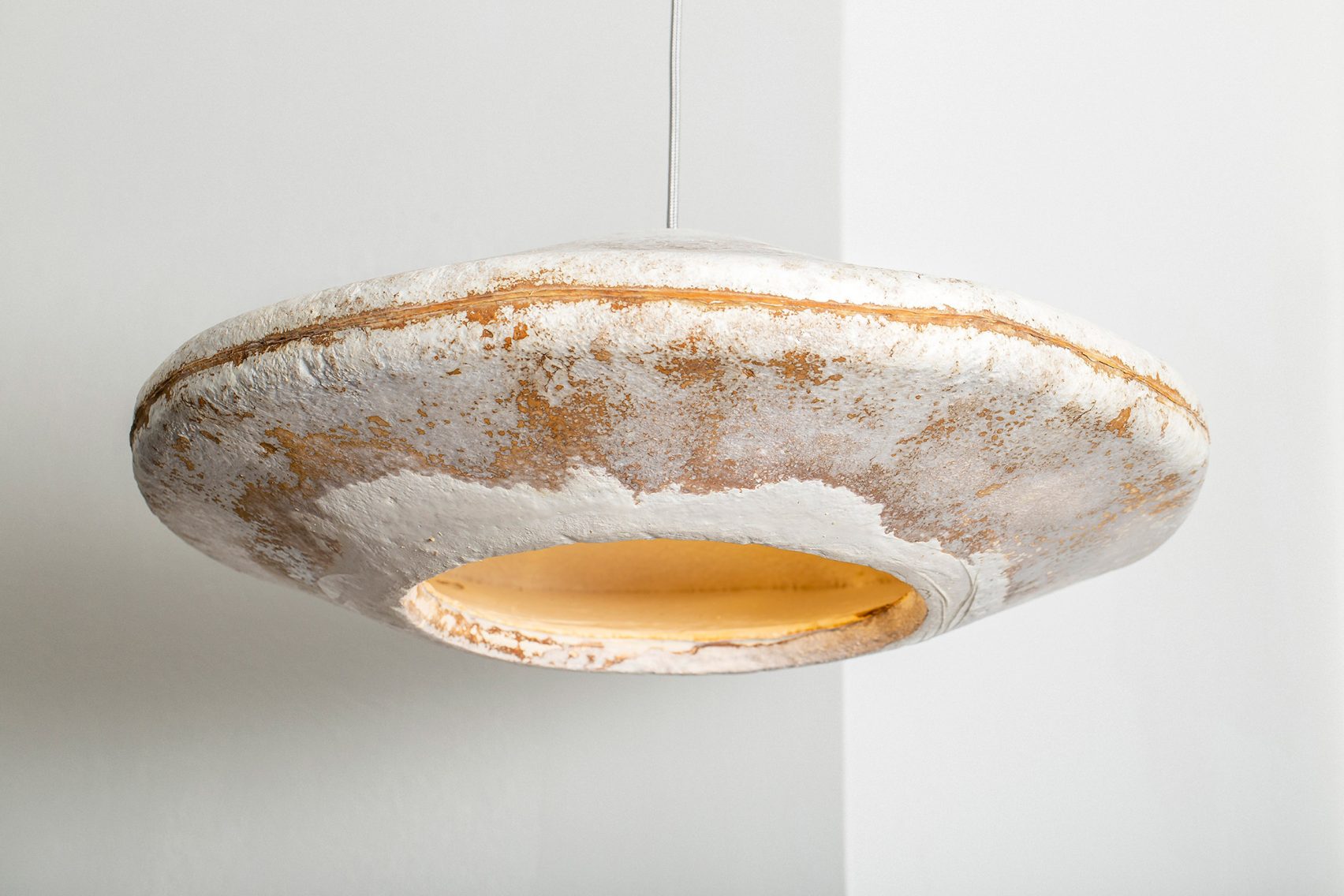

Along with designers, fungi continue to fascinate environmentalists, architects and artists. Earlier this year, the artist Haroon Mirza explored the use of mushrooms for healing and in shamanic rituals, in an exhibition that included synthesiser drones and a live ant colony, showcasing how the ancient and the modern, technology and nature, are more urgently intertwined than ever.
On view now in London until 23 Sep 2023 are a group of new sculptures by Nour Mobarak formed from mycelia. The artist has explored the form throughout their career, with their Sphere Studies producing fantastic fungal forms.
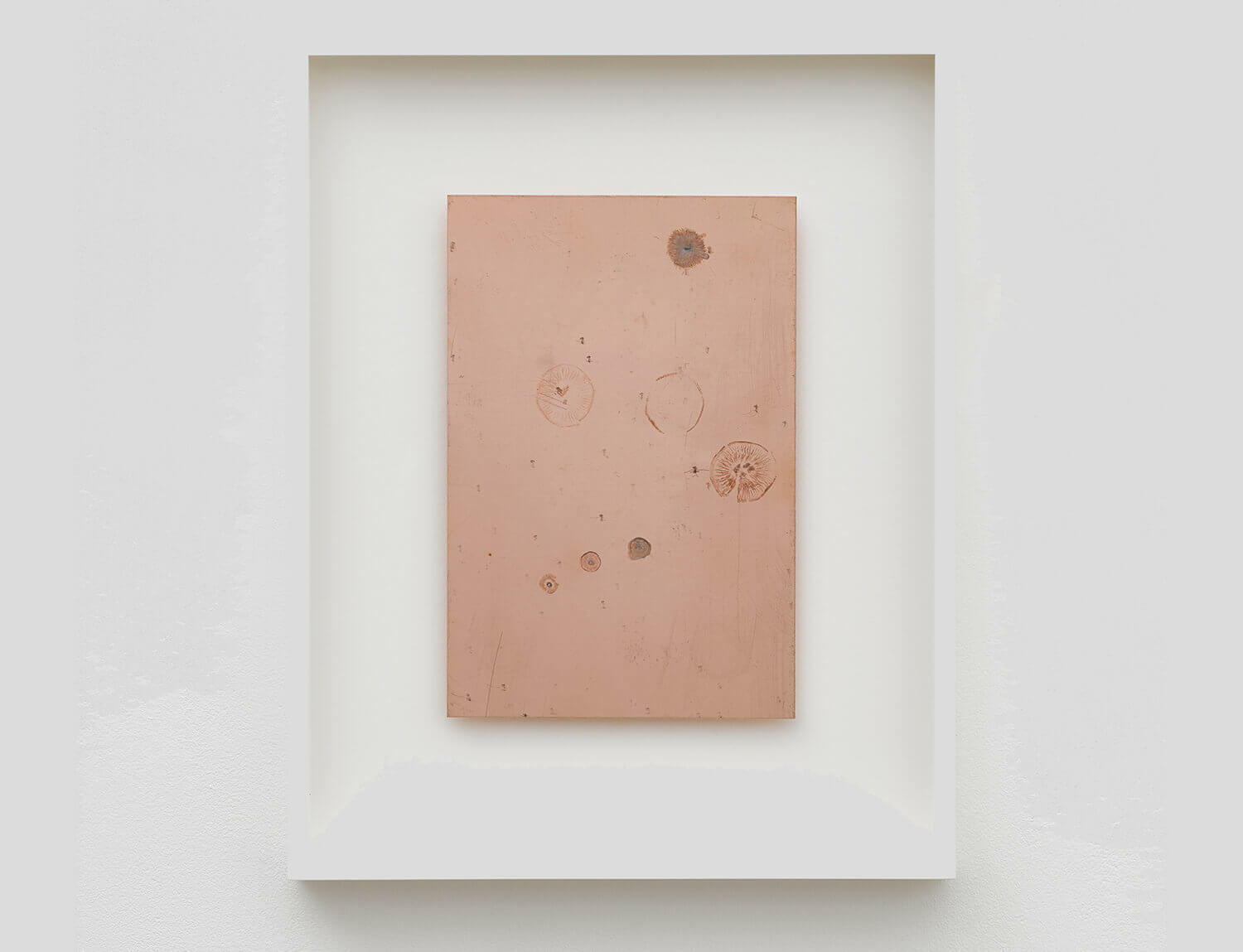
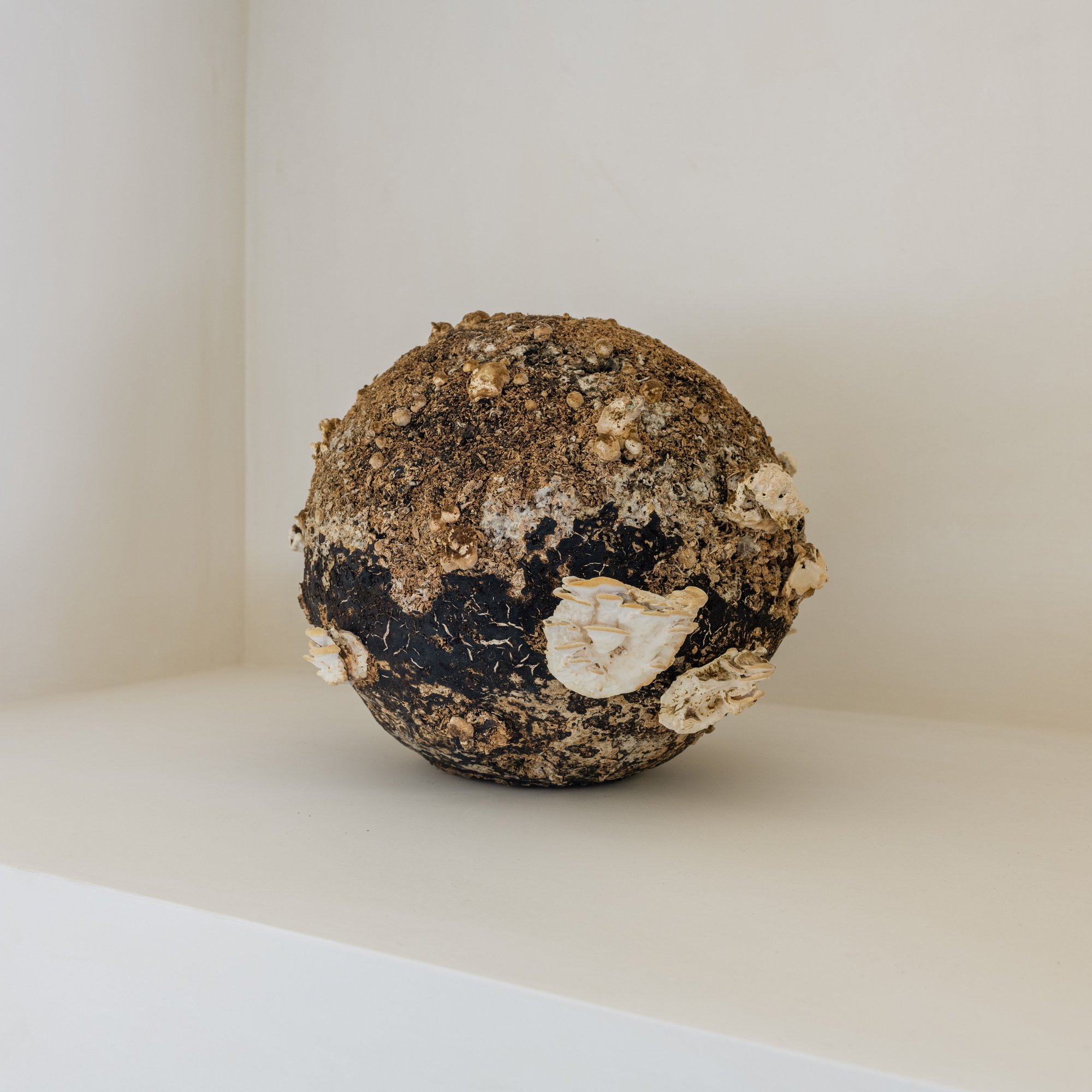
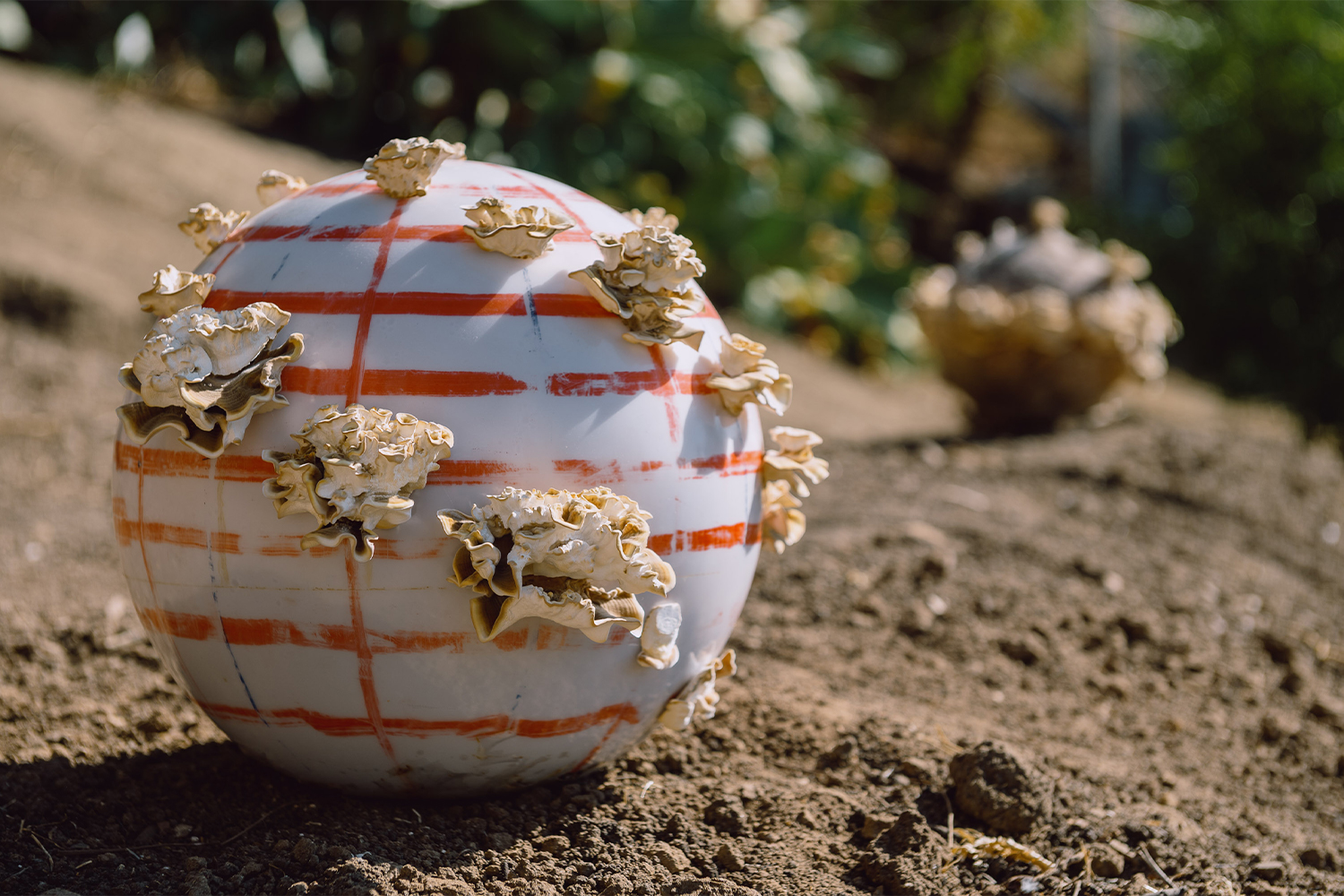
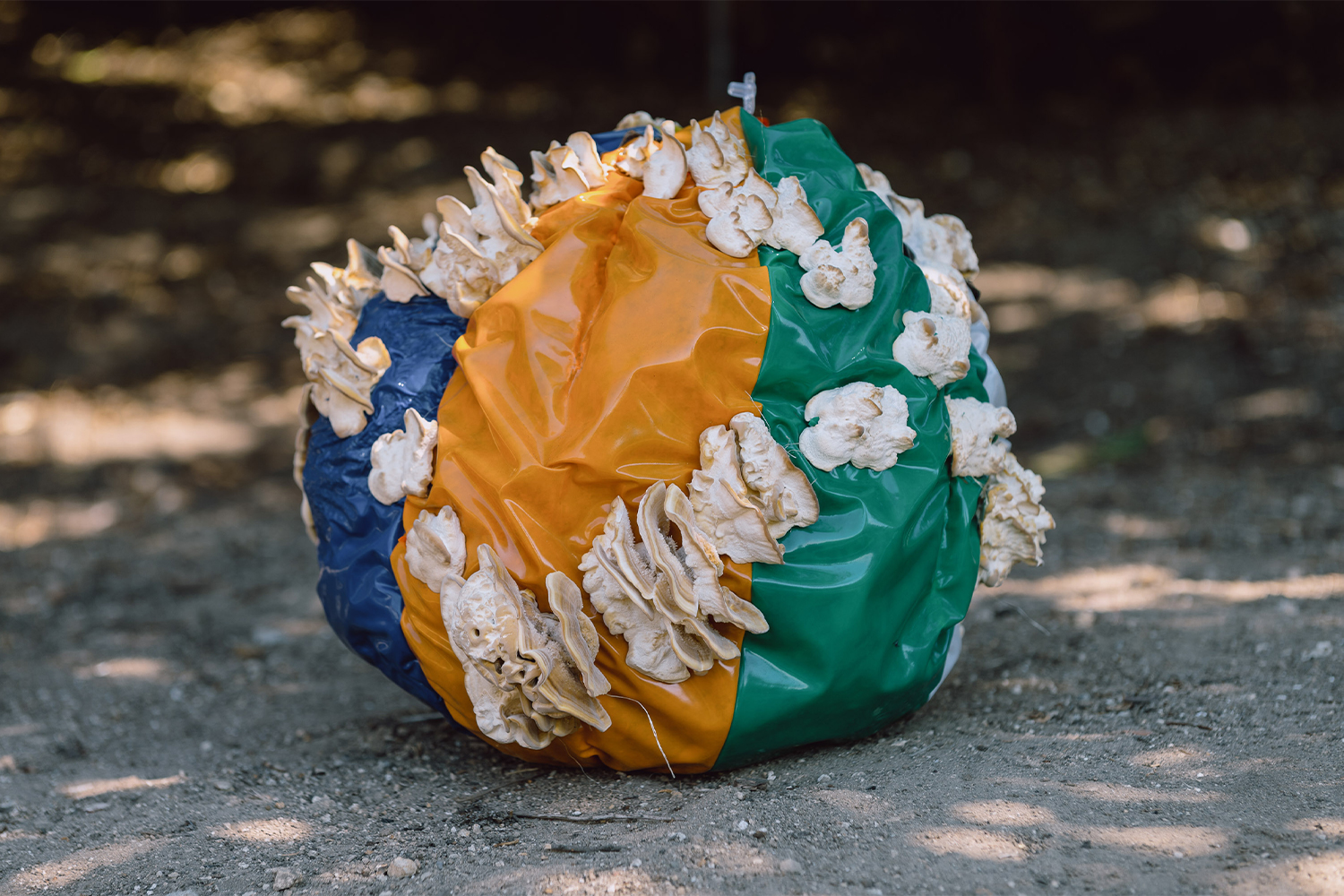
With the climate crisis has come a desperate need to understand nature via new technologies and vice versa; yet our fascination with mycelium is nothing new. It dates back centuries: from Mayan mushroom stones to the ancient Pegtymel petroglyphs of Russia, the power of fungi has been explored throughout human history.
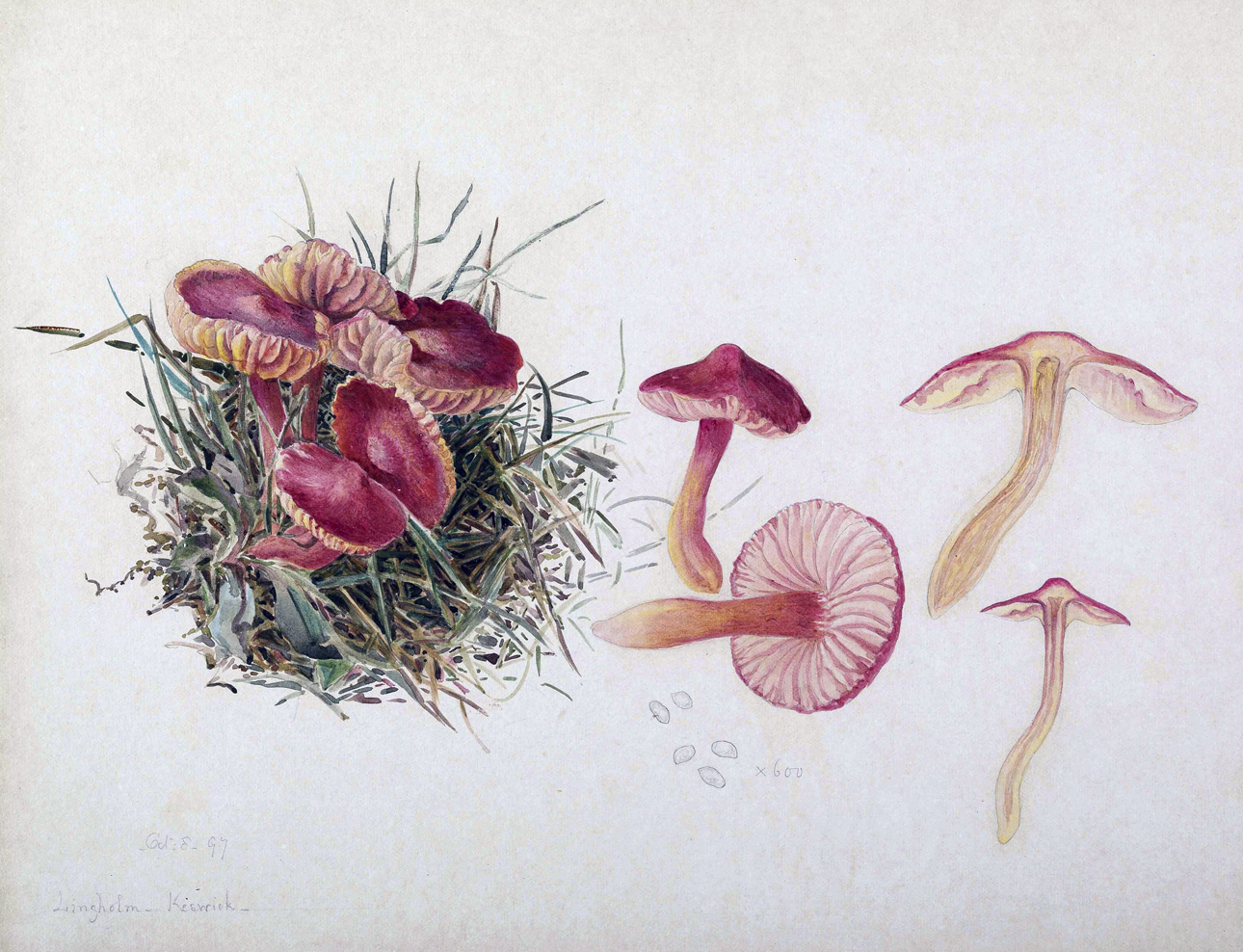
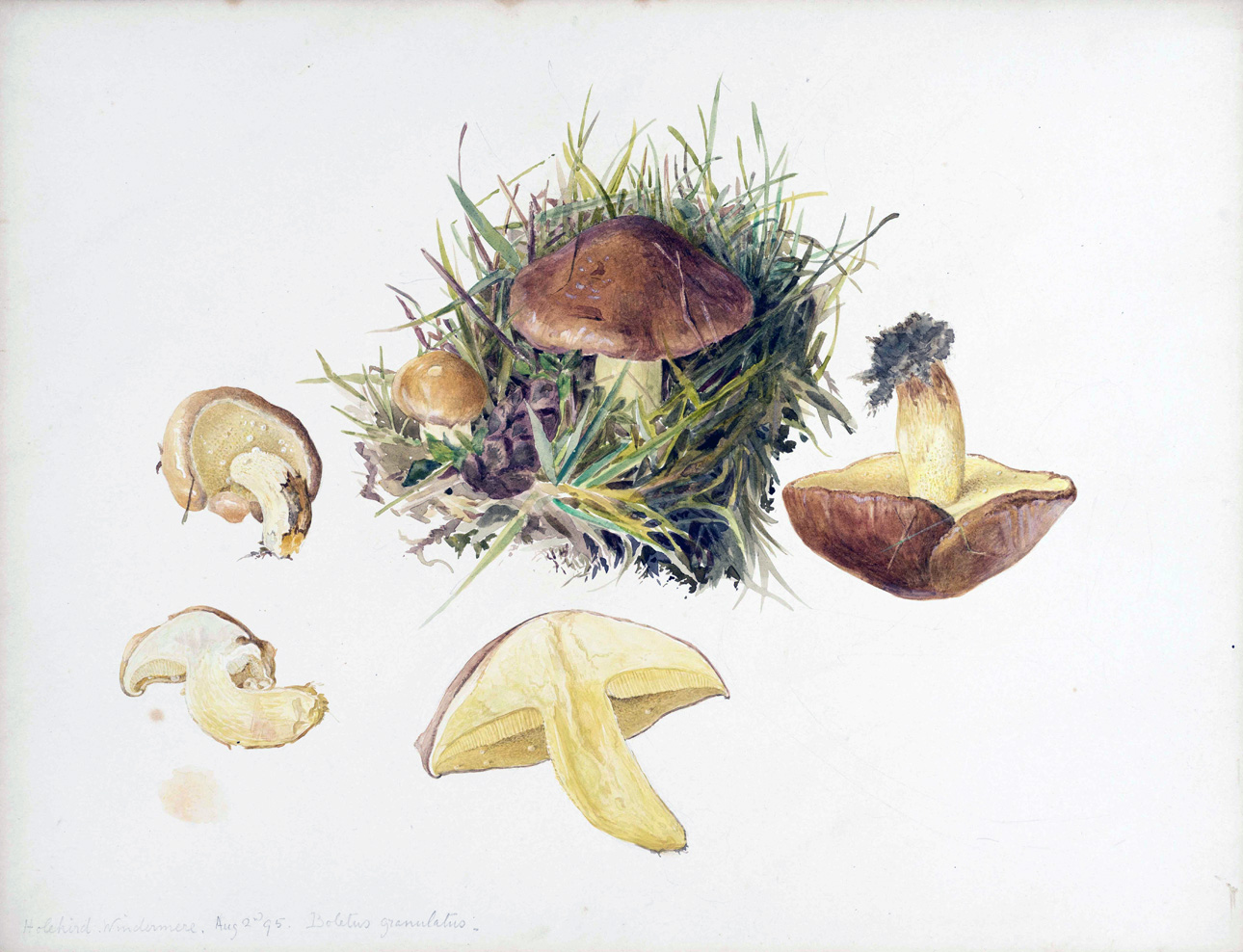
Today, however, mycelium – described as ‘earth's natural internet’ by well-known microbiologist Paul Stamets – embodies our growing interest in systems. What’s more, they represent the hope of healing our damaged planet – as an ally in the climate crisis. What breakthroughs might be possible, if only we could learn to speak their language? Our fungal future is already here and mycelia are being put to practical uses, from producing medicines to mycoremediation, where they detoxify polluted environments. As for the built environment, architects are joining the mushroom revolution, too.

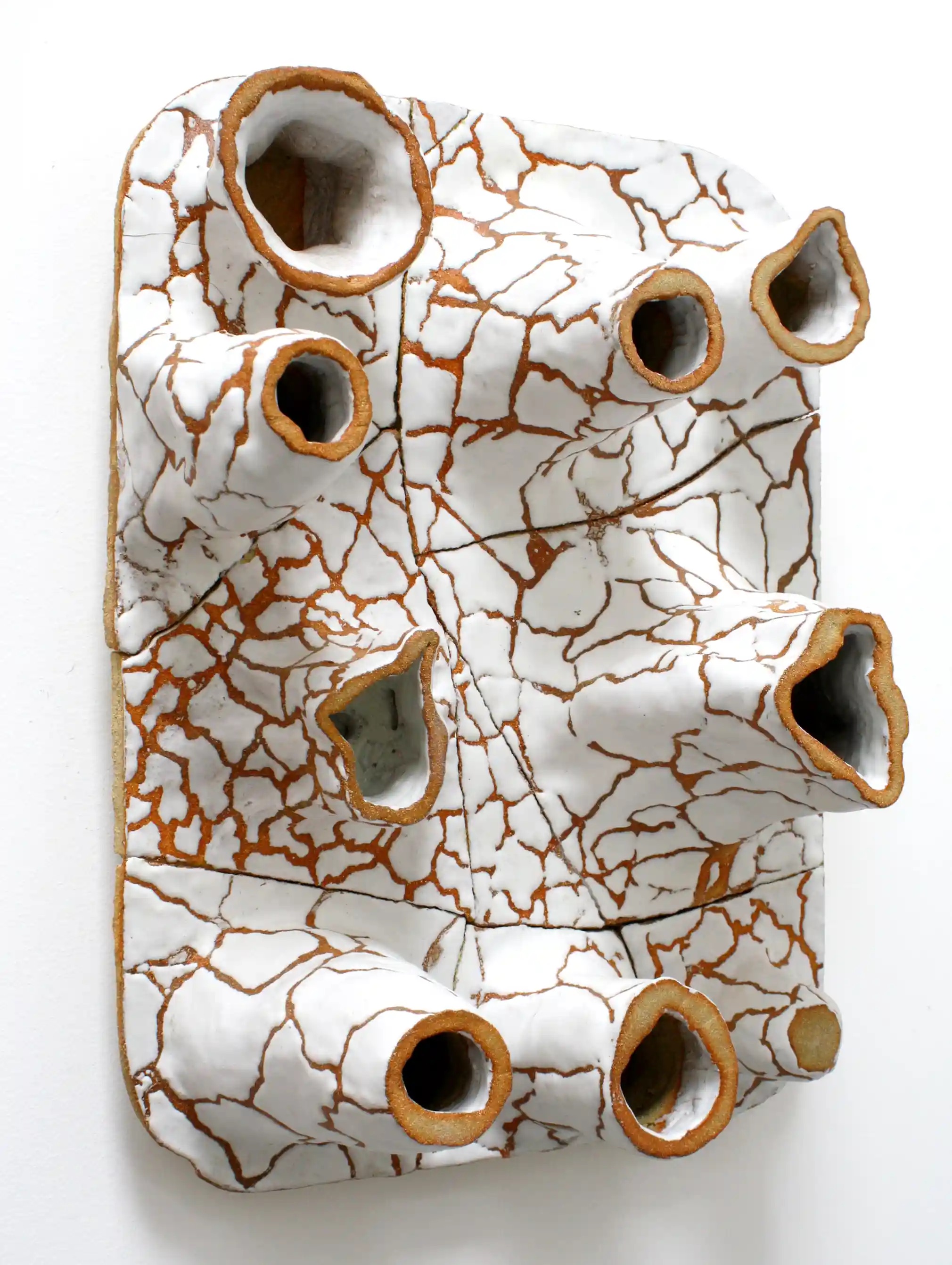
SHROOM SHAPES
Indeed, it’s not just chairs, lampshades, shoes and statues that have been made from mushrooms, but bigger structures, too.
The MycoTree, designed by Dirk Hebel and Felix Heisel for the 2017 Seoul Biennale of Architecture and Urbanism, is a living sculpture that showcases the aesthetic and structural potential of fungal architecture. This stunning installation consists of a lattice-like structure made from mycelium-based bricks. Exemplifying the circular economy principles of fungal architecture, the MycoTree can be composted at the end of its lifecycle, nourishing new growth. Inspired by the graceful curves formed when a rope hangs freely between two points, the pavilion showcases the beauty and structural efficiency of these unique shapes.
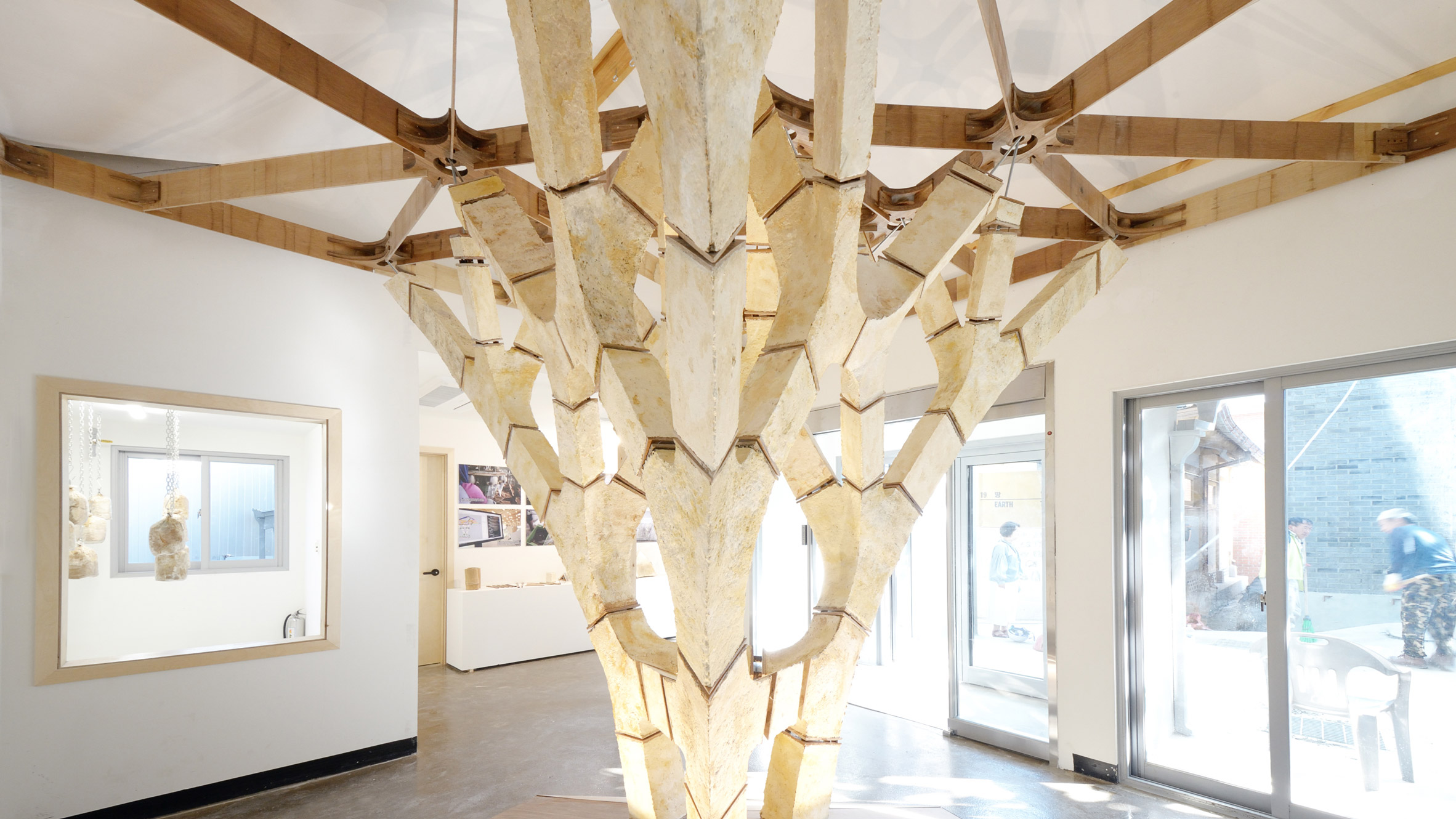
In a remarkable fusion of art and engineering, the Carlo Ratti Pavilion pays homage to architectural legends Antoni Gaudí and Swiss engineer Heinz Isler through its innovative use of inverted catenaries made from up to a 1-kilometer-long mycelium. The structure, called “The Circular Garden”, was grown from soil made over a six week period, and was returned to the soil at the end of its installation at Milan Design Week 2019.
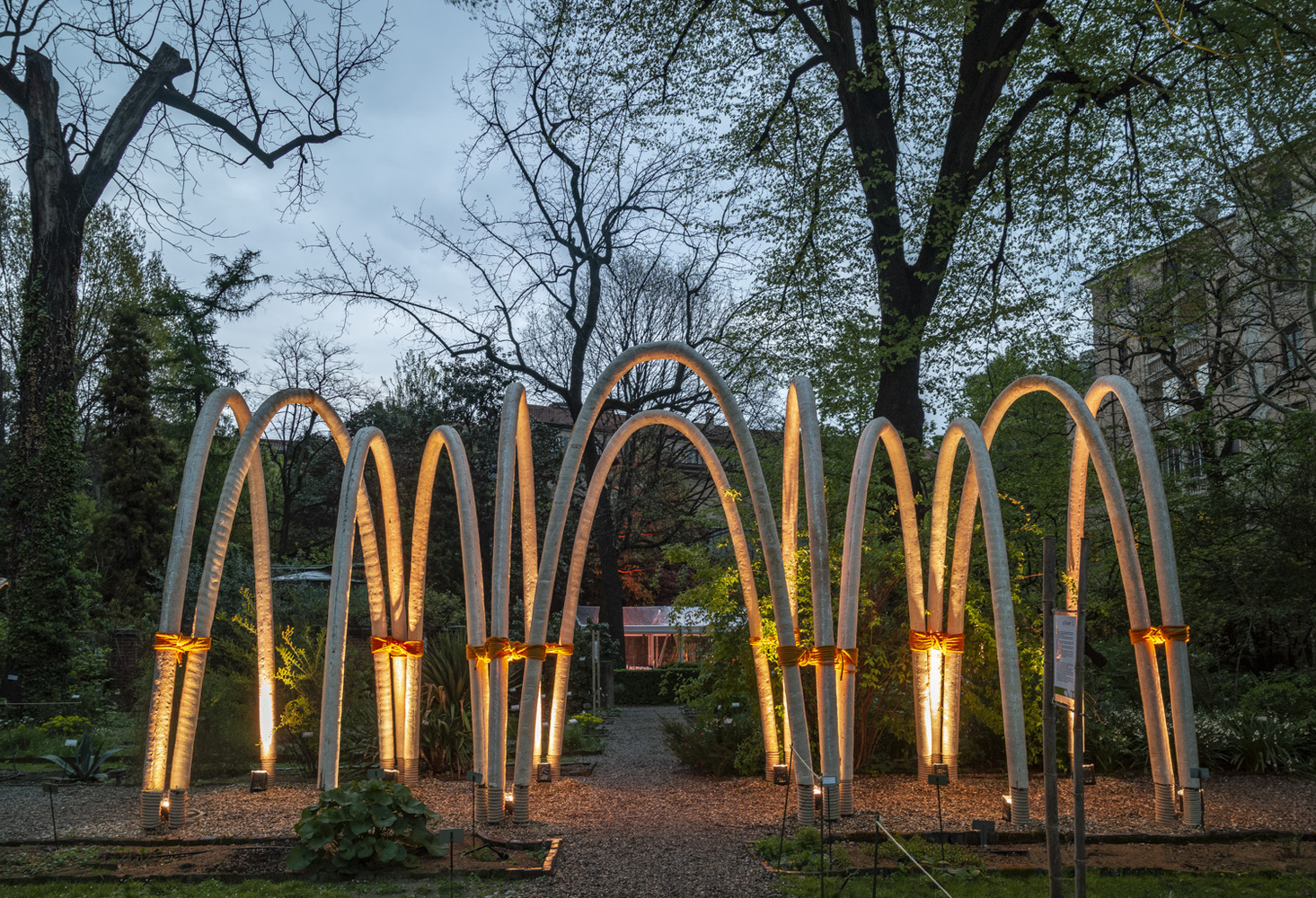
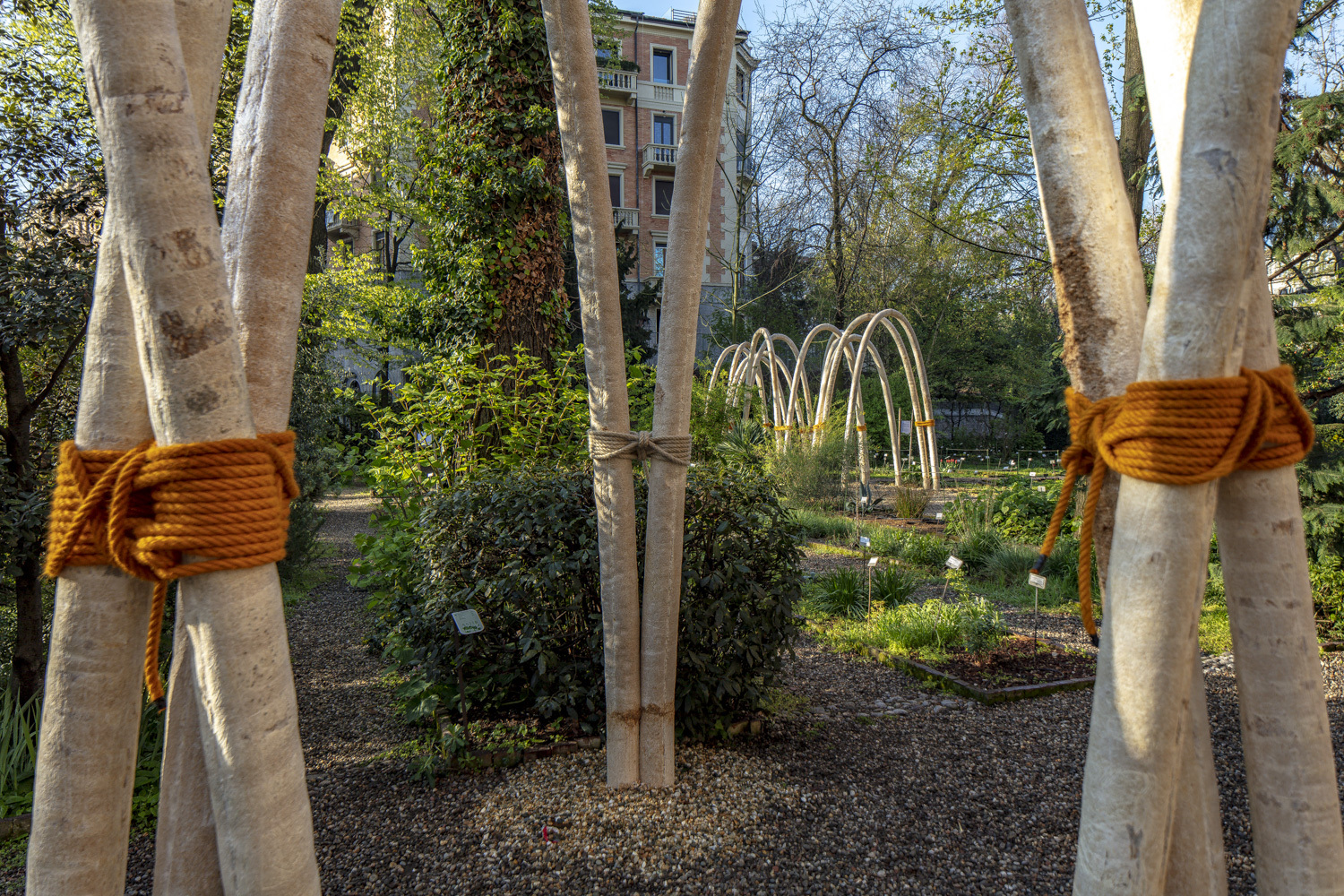
More recently, at Glastonbury Festival this year, Festival set designer Simon Carroll has created the spiralling Hayes Pavilion from salvaged timber and mycelium, to challenge the industry's over-reliance on polystyrene foam in stage and set design.
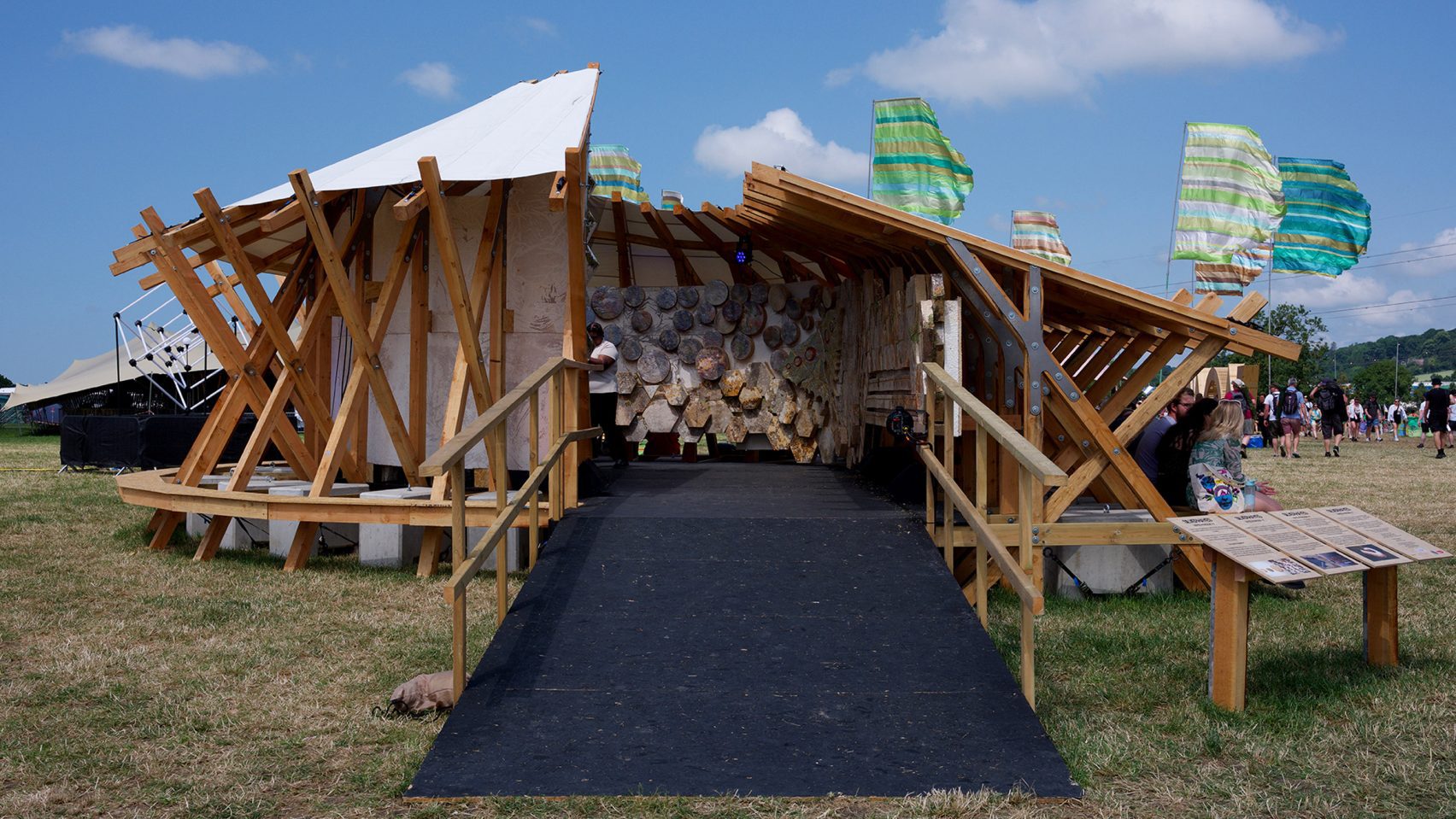
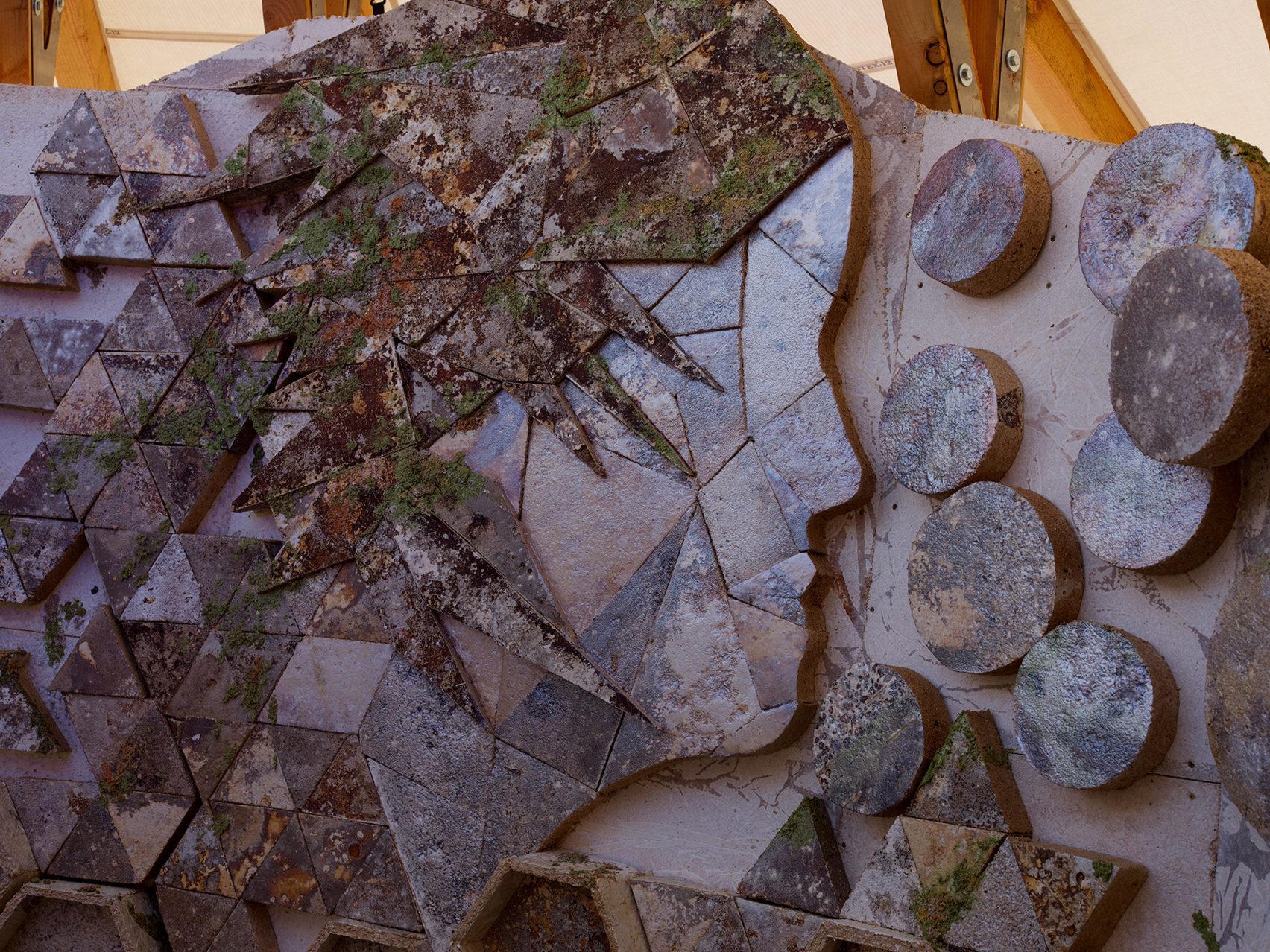
LIVING PAVILIONS
Supported on a timber frame, The Growing Pavilion did as its name promised, with its panels being grown from mushroom mycelium. The outer coating is a bio-based product originally developed by the Maya people in Mexico. During Dutch Design Week 2019, it hosted a range of events, welcoming visitors into a space that advocates for the future of mycelium structures.
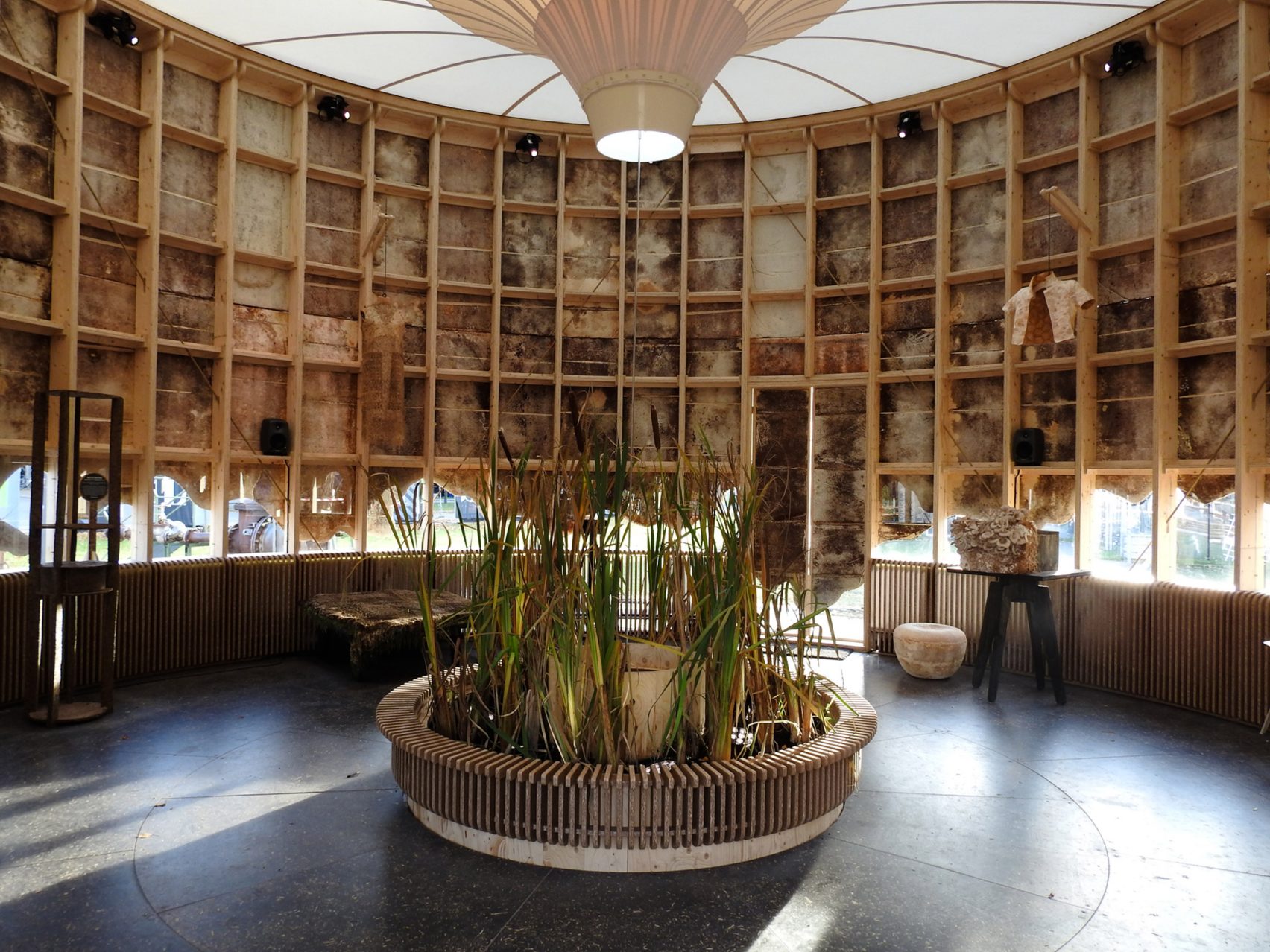
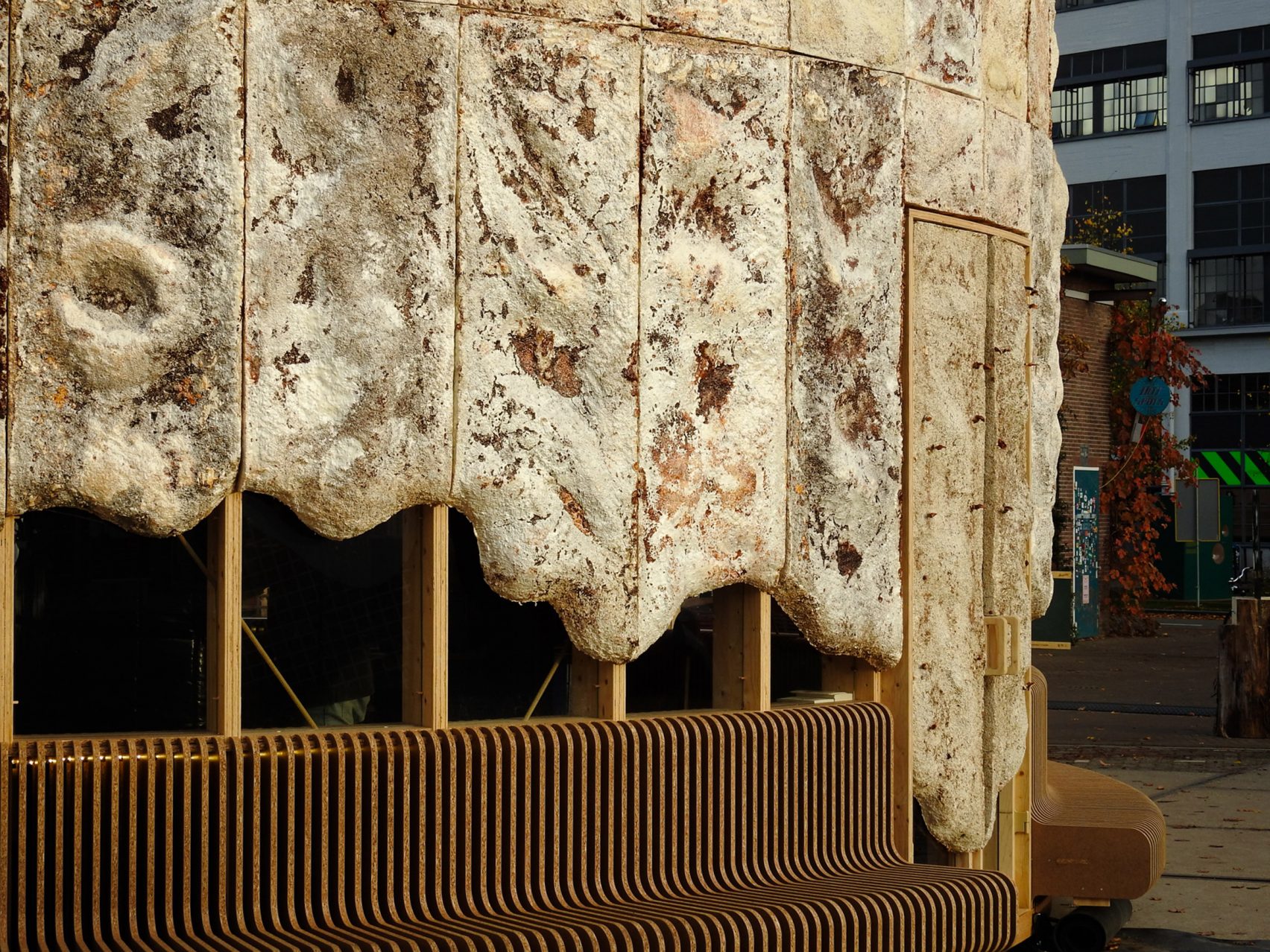
The most iconic example of fungal architecture – which also happens to be one of its earliest, is the ‘Hy-Fi’ tower, designed for the MoMA PS1 Young Architects Program in 2014 MoMA PS1 gallery pavilion. Created by The Living, an architectural design studio, this temporary structure featured over 10,000 mycelium bricks grown from corn stalks and other agricultural waste. The tower's bricks were assembled into a complex geometry that allowed light, air, and sound to permeate the interior while providing excellent insulation. The Hy-Fi Tower demonstrated how mycelium-based materials can be used to construct sustainable, organic structures that integrate seamlessly with the surrounding environment.
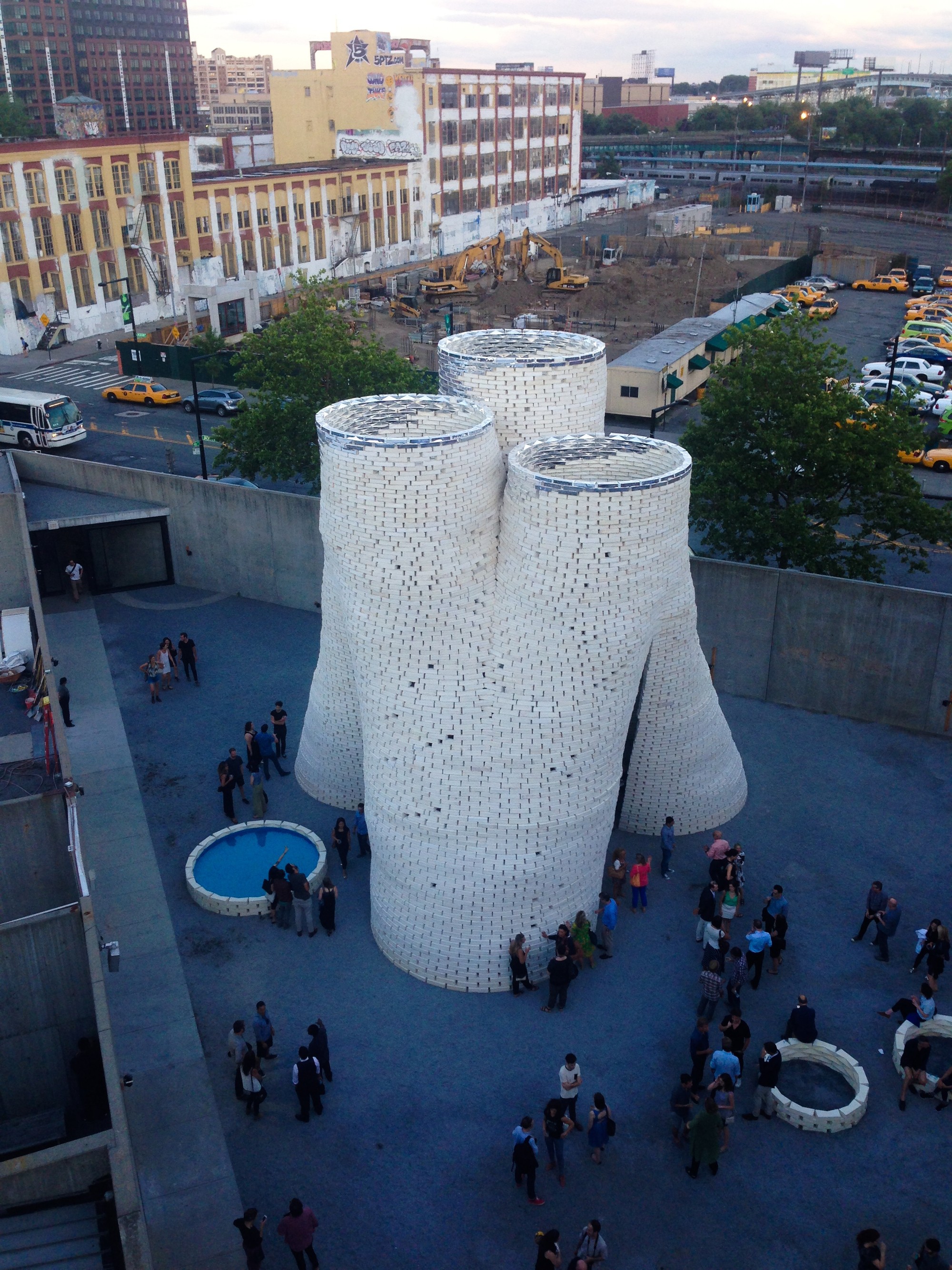
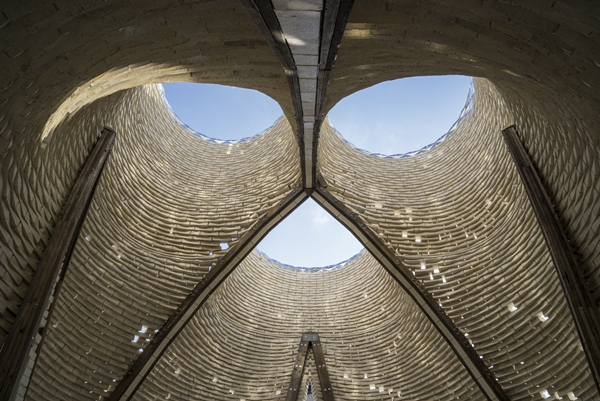
MYCELEA ON MARS
While still in the conceptual stage, the Fungar Project envisions using fungal architecture to build structures on Mars. Designed by Lynn Rothschild and her team at NASA Ames Research Center, the project proposes using mycelium as a biocomposite material to construct habitats for future Martian settlers.
Mycelium's potential for bioremediation and its ability to grow in extreme environments make it an ideal candidate for sustainable construction beyond Earth. The Fungar Project showcases how fungal architecture can be applied to advance human exploration and colonisation of other planets, pushing the boundaries of both architecture and space science.
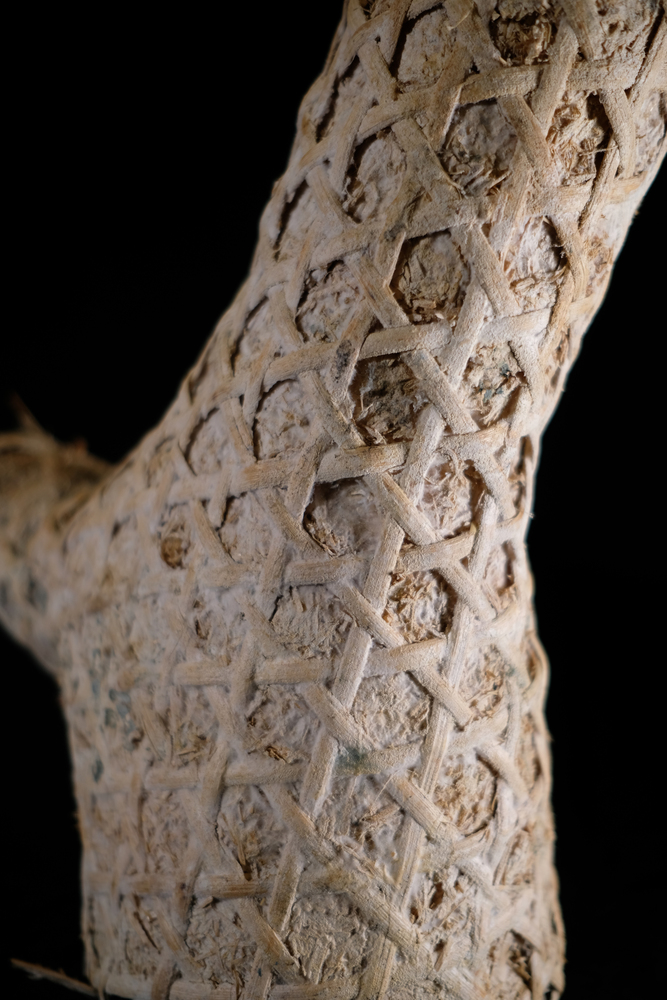
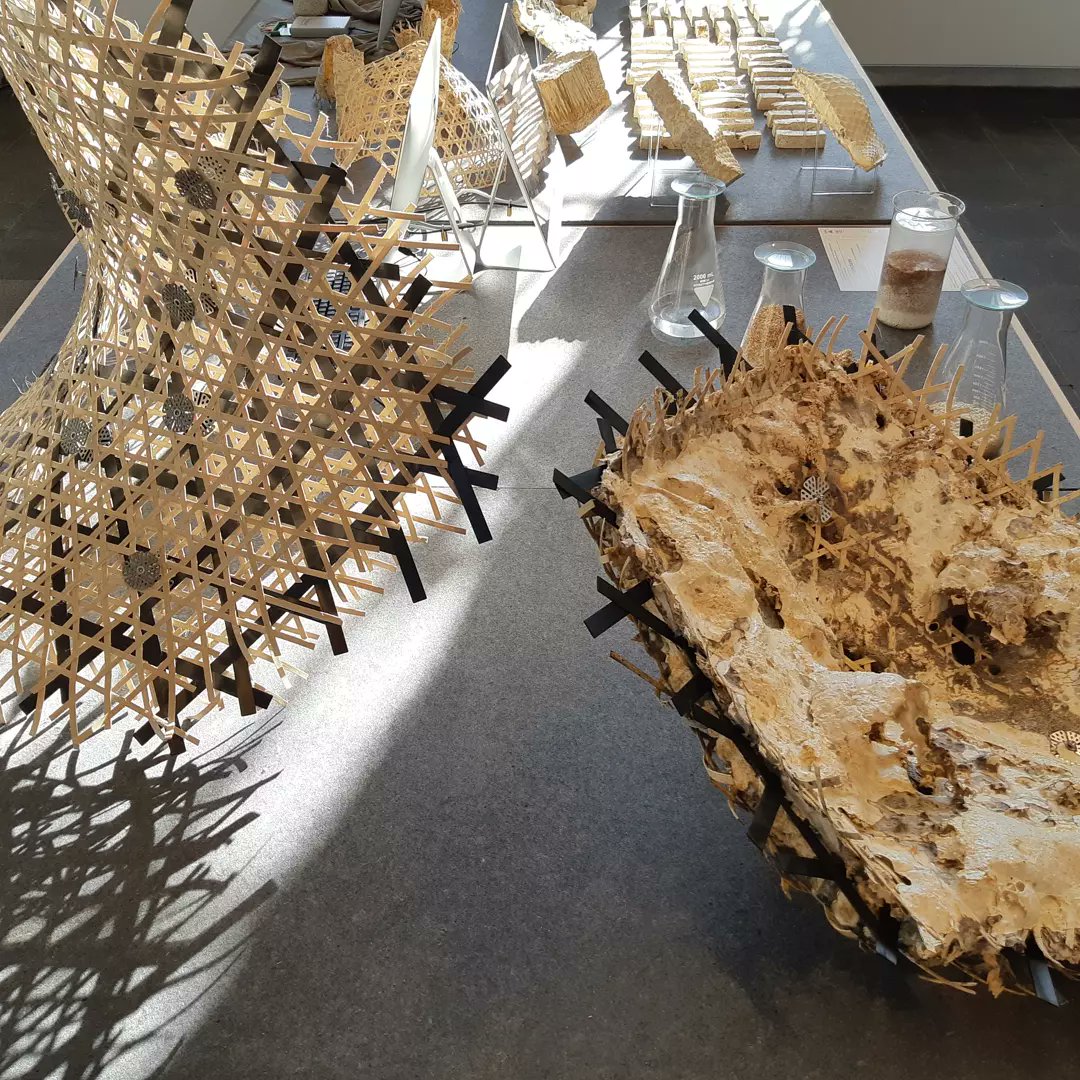
SPRING UP
Fungal architecture is more than just a new trend; it embodies a paradigm shift in the way we envision our built environment. By drawing inspiration from the natural world, architects are crafting structures that embrace sustainability, foster collaboration between disciplines, and promote innovative solutions to global challenges.
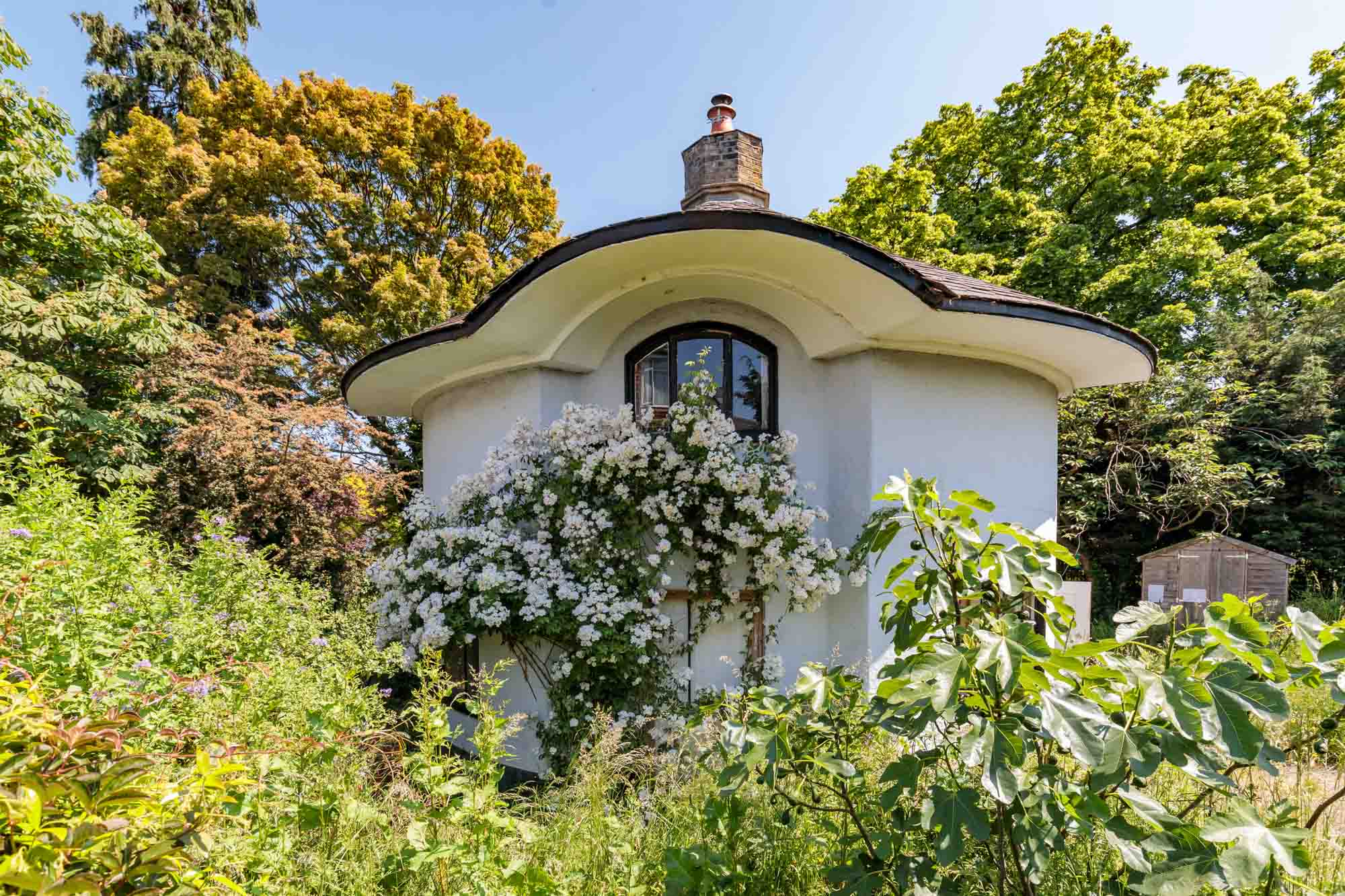
As we continue to grapple with pressing environmental concerns, fungal architecture stands as a shining example of how we can harmoniously integrate our human endeavours with the resilient and interconnected systems of the non-human worlds.
The mycelium revolution is here, and it holds the potential to shape a greener, more sustainable world for generations to come. Just as shamans use psychedelic mushrooms to open minds onto new, psychic planes, we must open our minds to the inexhaustible potential of the natural world.
By Sammi Gale